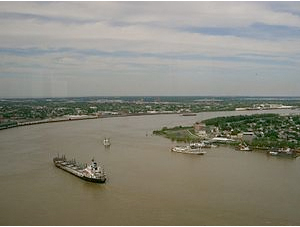 |
 |
|
| eNews • January 2013 | ||
| Promoting a Cost-Effective, Reliable and Competitive Transportation System |
||
 Mississippi River grain concerns
Mississippi River grain concerns
The 2012 drought not only stressed crops this season, it continues to stress farmers as water levels on the Mississippi River are low enough to begin disrupting barge traffic, possibly impeding the movement of grain.
Barge officials are beginning to reduce services and lighten barge loads in response to lower levels which affects the transportation of soybeans and grains down the river for export and also affects the movement of fertilizer and other inputs up the river for farmers’ needs.
“The echo of this summer’s drought continues to be heard this winter,” said Mike Steenhoek, executive director of the Soy Transportation Coalition. “Some grain haulers are already making alternate plans for transporting freight, including looking to trucking and rail. Both options are more expensive and less fuel efficient transportation methods compared to using barges.”
The higher costs will place stress on farmers. “Agriculture is already such a tight-market industry. Additional costs can’t easily be passed on to customers.”
According to Steenhoek, nearly 80 percent of all U.S. soybean exports leave the country between September and February, making that six-month period critical for barge traffic. While many of the Mississippi River terminals close for weather and maintenance in the winter, the river continues to be a main source for transportation south of Illinois.
“There are no locks in the stretch between Cairo, Ill., and St. Louis; making the area more susceptible to Mother Nature and low river levels,” said Steenhoek.
The Army Corps of Engineers is working to stabilize levels by removing granite structures impeding movement and releasing water from reservoirs in southern Illinois. “We’d like to see more water released from Missouri River reservoirs, as well,” added Steenhoek.
Despite the challenges, oilseeds and grains will continue to move. Grant Kimberley, Iowa Soybean Association director of market development, said the situation will certainly add more cost to shipping soybeans to New Orleans for export, making the basis a little wider for soybean farmers and our soybeans a little more expensive for export buyers.
“On the other hand, the great thing about Iowa is it is positioned to ship to the south through river or rail modes of transportation and via rail to the Pacific Northwest export terminals,” said Kimberley.
Soy Transportation Coalition |
|
